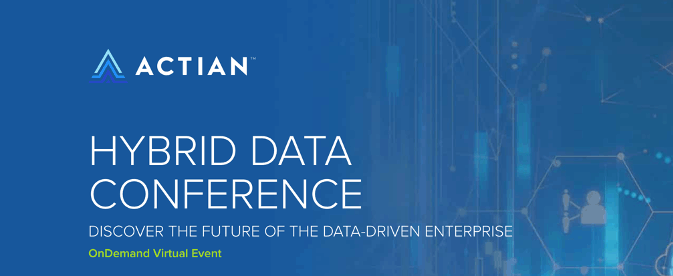Introducing Our 2021 Interns
Actian Corporation
July 28, 2021

Summer is in full swing which can only mean one thing… Actian’s internship program is back! For the second year in the row, Actian is hosting a 12-week virtual internship program designed for college students to explore careers in tech. This year, our interns will get a chance to gain experience with teams in Engineering, Finance, Technical Course Development, Marketing, and People. Get to know a little more about each intern below:

Adesh Kumar
IT Applications Intern
Adesh is a graduate student pursuing a Master of Fine Arts in Visual Effects from the Savannah College of Art and Design. After receiving his bachelor’s degree in Computer Science from UC Santa Cruz, Adesh became fascinated with visual design. It was not long before he discovered a field that would allow him to leverage his CS skills without having to leave his artistic side behind. When Adesh learned about user interface and user experience design, he knew this was the type of work he was looking to explore. Luckily, through Actian, Adesh has been able to further develop his skills in these areas and aspires to one day lead a UX team of his own.
Now, you might be wondering what exactly an IT Applications Intern does at Actian. After waking up at 7 am, sipping on some coffee, and going through a few morning meetings, Adesh is ready to work on his summer project. His project focuses on designing an internal application for the company. In just five weeks, Adesh is amazed at how much he has learned in such little time. Already he has iterated through different designs, contributed his ideas in meetings, and has come to appreciate the importance of documenting everything he does.
One word you can use to describe Actian’s work environment is collaborative—and this just happens to be Adesh’s favorite part about interning here. Not only is Adesh able to work with his team towards weekly goals, but he is also able to partner with people outside his immediate team. This allows him to see how different teams work together to better support the company.
After a long week of work, Adesh shuts down his computer and turns off the lights to his studio (a neat project he and his brother accomplished of turning their garage into a workspace) and begins his relaxing weekend. Usually, you can find him watching formula one races, catching up on the latest NBA games, or practicing his newly learned quarantine trick—juggling any 3 objects he sees in sight.

Iris Lee
Product Marketing Intern
Iris is a rising junior studying Economics and Data Science at UC Berkeley. When it came to deciding her major, Iris knew she had always been curious about consumer’s behavior in decision-making, particularly in a business setting. However, after taking an introduction to data science course, Iris gained a greater interest in the intersection between business and technology. In fact, the reason she applied to Actian was because she found it to be a perfect blend of the two. Upon doing further research on the company, Iris became intrigued with the concept behind cloud data warehouses. As someone who loves data, growth, and innovation, reading about Actian’s products made her excited about the future of analytics—and it was an avenue she wanted to learn more about.
Knowing that Actian’s products were the first thing that caught her eye, working with the marketing team is the perfect fit for Iris. As the product marketing intern, Iris is researching different buyer personas to better understand customers in industries such as health care, manufacturing, and financial services. Through this research, she hopes to gain insight on the type of data visualization tools these industries utilize and how they can operate in conjunction with Actian products. During this internship, Iris hopes to strengthen her market research approach and learn to get comfortable with external applications in this area. She is also looking forward to learning all the tips and tricks on becoming a great presenter, which she will then prepare to use during the internship showcase.
One of the things that makes Actian’s internship program so great is that as much as interns get to work on meaningful projects, they can also take time to distress by attending fun weekly intern events. This is Iris’ favorite part of the internship. Meeting other interns, laughing at Fibbage responses, and creating random PowerPoints are just a few of the perks for attending these events, which in Iris’ opinion, is a great way to wind down the week.
When Iris is not working or attending an intern event, you can find her cruising through her neighborhood on her penny board, reading fiction books from the New York Times Best Sellers, or indulging in the greatest snack of all time…drum roll please…Hot Cheetos.

Mollie Kendall
Digital and Demand Generation Intern
Mollie is a senior at Texas State University, where she will be graduating this fall with a Bachelor of Business Administration in Marketing. Mollie decided to concentrate her degree in marketing when she noticed how crucial it is for the success of any business—especially her own. Yes, you read that right, prior to entering college, Mollie was already a successful business owner! In 2008, she began her own photography business. What first began as family portraits eventually progressed to all different types of photography including commercial, weddings, and sports. It was sports photography that eventually led Mollie to land a job with the Texas Stars as their marketing photographer. Although shooting ice hockey is not an easy task, being able to capture such a competitive sport is something Mollie truly enjoys and hopes she can continue doing so in the future.
Mollie first heard about Actian’s internship program through a close mentor, who connected her with an employee at Actian. Wanting to go beyond the classroom setting, Mollie was looking to gain real world experience in marketing which was exactly what the Digital and Demand Generation intern role offered.
Currently, Mollie is exploring different facets of social media to see how Actian can stand out in today’s competitive market. Although marketing can be labeled as a “creative field”, Mollie has already learned the importance of collecting, analyzing, and researching data in this area. By the end of the internship, she hopes to gain a greater understanding of the analytics behind marketing and discover what strategies increase brand recognition.
We all know the phrase, “you learn something new every day”, but little do we often take time to reflect and realize the truth that comes with this statement. For Mollie, this is one of the reasons that makes Actian a great company. Whether it’s learning new software, skill, or marketing lingo, Mollie appreciates how dedicated her team is in ensuring she is always learning and developing in new ways.
When she is not at work or shooting for the Texas Stars, you can most likely find Mollie playing on her local ice hockey team, spending time with her adorable Aussie puppy, or watching any type of gangster mob movie out there (with Goodfellas being her favorite).

Geethika Bonthala
Finance Intern
Geethika is an incoming sophomore at the University of Texas at Austin majoring in Finance, minoring in Economics, and working towards a certificate in Applied Statistical Modeling. Finance first caught her attention when she joined DECA in high school, an organization dedicated to developing students in leadership and business roles. Through DECA, Geethika had the opportunity to shadow a mentor who worked in finance. It was through this experience where she noticed that many of her strengths closely aligned with the skills needed to succeed in this field.
Geethika’s journey to Actian was a bit different than other interns. She first applied to the Sumeru Equity Partners Fellows Program, which seeks to place fellows at one of its portfolio companies. After going through a few rounds of interviews, she landed herself a spot on Actian’s finance team, which was a top choice for Geethika as she was looking to gain exposure to corporate finance.
Working on the FP&A team, Geethika is currently building a KPI dashboard for the finance team. One of her favorite parts about this project is working collaboratively with her team. Additionally, Geethika enjoys the work environment at Actian. There is enough space for her to do her research and independently try to tackle a task, but there is also enough support where she knows she can reach out to people in case she needs the help. Given that this is her first internship, Geethika loves that she is doing real work, as her project will have a direct impact on the company.
When Geethika first decided to study finance, she never thought about it in the context of technology. However, after this internship, she would love to explore future opportunities that incorporate both finance and tech. When she is not crunching out numbers or working on an excel spreadsheet, you can find Geethika playing the violin (which she has played for 14 years!), spending afternoons on the tennis court, or making trips to one of the most therapeutic places in the world—Target.

Bianca Lawson
Technical Course Developer Intern
Bianca is currently a graduate student at the University of Central Florida pursuing her master’s degree in Instructional Design and Technology. Now, for a quick short story on how Bianca came across this internship opportunity… One day, Bianca decided to open her laptop and browse through her advisor’s bulletin page to see what internship opportunities were available for the summer. While scrolling through the page, one particular company stood out… blue lettering, Montserrat font, great looking logo… it was Actian. Although this was her first time reading about the company, the internship description matched with the skills Bianca was eager to learn. Most importantly, she noticed that the internship program offered a dedicated buddy—which was something she valued, especially for getting acclimated to a new industry. Today, Bianca is grateful for taking a few seconds of her day to scroll through that page since it led her to her first tech internship that has exceeded her expectations.
As the technical course developer intern, Bianca is helping revamp courses in Actian Academy, the company’s on demand training platform. During the week, Bianca is busy creating storyboards, typing up scripts, and obtaining the chance to see first-hand what it’s like to produce educational content for internal and external use.
One of Bianca’s favorite parts about being on the education team is how encouraging and patient everyone is. She loves having the opportunity to work on things independently, present her work to her team, and then have the ability to get feedback. Additionally, she knows that if she ever has questions, someone on her team is always willing to answer them. One of Bianca’s biggest goals this summer is to gain competence and confidence in a new skill, which is certain she’ll be able to reach with such a great team by her side.
Outside of work, you can usually find Bianca with a mystery book or a controller in hand, most likely playing the Sims. During her free time, she also loves to cosplay (her favorite character to dress up is Tina Belcher) and attend conventions to meet new people. In the future, Bianca sees herself having a career in instructional design, working in the tech sector, and perhaps even living in a state that snows (since she has never seen snow before!).

Josh Steigerwald
Software Engineering Intern
Josh is a rising senior at Stony Brook University studying Computer Science and Finance. Growing up, Josh didn’t know much about computers (apart from playing the educational CD-ROM games) and only had real exposure to them when he was in school. However, this all changed when his parents introduced a new addition to the family—the iMac. This instantly piqued Josh’s curiosity about computers and naturally led him to take a few computer science courses in high school. It wasn’t long before Josh realized that he enjoyed the content he was learning and could see himself pursuing a career in this field. In the future, after leaving his mark on the engineering world, Josh would like to explore the business side of tech, which is a big reason why he is also studying finance.
If there is one word to describe Josh it would definitely be entrepreneurial. At an early age, Josh started a business… which down the road turned into several businesses. From doing handyman work to having a landscaping business, to teaching private music lessons, Josh has worn multiple hats and gained valuable skills throughout the years. All this business work has taught Josh how to handle his finances, time management, and the importance of building trust with customers.
What drew Josh to this internship program was Actian’s culture. Every person he met during his interview stage were all so friendly and willing to extend themselves, even before he was hired. Now that he is working with Vector, Josh can see how this welcoming atmosphere is still foster within his team, which has ultimately made this internship one of his best learning experiences so far.
Something you might not know about Josh is that he collects instruments and vinyl records. He has collected over 50 instruments and at one point had over 4,000 vinyl records. In his free time, you can find Josh spending time with his cats, shooting some digital and film photography, or performing jazz music.

Alba Lokaj
Software Engineering Intern
Alba is a rising third year at Jacobs University Bremen studying Computer Science. Like many others, Alba was first introduced to computer science through her education. After taking some computer science classes in high school, she was amazed at how writing a few lines of code could bring an application or website to life. Alba saw computer science as a way to build and drive innovation in the future so when it came time to choosing her area of study, computer science was the al fit for her.
Alba first heard about Actian through LinkedIn. Looking to get experience in managing and manipulating data, Actian seemed like the ideal data driven company that could help her achieve this. Currently, Alba sits in Actian’s office in Ilmenau, Germany and is directly working with the Vector product. Already, she has done research on external libraries, worked with new programming languages, and partnered with people on her team to help her succeed in her project. Alba’s main goal coming into this internship was wanting to receive practical experience in software, something she can successfully say she was able to do as soon as she started her internship.
After this internship, Alba knows she would like to continue working in a software engineer role and eventually one day would like to obtain her master’s degree in Computer Science. She hopes she can take her skills and work on purposeful projects in both her personal and professional life.
In her free time, you can find Alba going on a run in the green countryside of the city, playing on her university’s soccer team (where she takes on the leadership role of captain), or listening to alternative/indie music. A key strength that Alba has is paying attention to detail, which is the reason Alba has a gift for doing impersonations. Not only can she impersonate her friends almost perfectly, but also can do this with characters she sees on TV, catching onto every small gesture and behavior possible.
And now for some rather familiar faces…

Sam Nichols
Software Engineering Intern
Sam is a returning intern from the University of Wisconsin-Madison where he will be graduating this fall with a degree in Electrical Engineering and Computer Science. Choosing to return to Actian was an easy choice for Sam. Last summer, he felt that he had tremendously grown, both personally and professionally, throughout the internship program. It’s hard to choose just one favorite thing about Actian, but if Sam really had to choose, it would have to be the amount of support offered by everyone he meets. At Actian, he never felt unsure or lost on what he needed to do. As an intern, this is huge. Having confidence in your work is such an awesome feeling, but knowing you have people that care about you and your work, is an even better feeling.
This summer, Sam is looking forward to working with Vector, the industry’s fastest analytic database. After spending the prior summer learning the ins and outs of the Actian Data Platform , Sam is excited to focus on another product, learn a slightly different skillset, all while being at a company that has been so vital to his professional development.
At the end of the 12 weeks, interns have the opportunity to present their capstone project to the entire company. For Sam, this was a great experience because you are presenting to employees beyond your team who all have a genuine interest in what each intern has to say. After presenting his project and being showered with supportive messages in the chat, it became clear to Sam that Actian is a place that values the input of all interns.
Working remotely comes with its perks, one of them being the ability to create your ideal workstation. So I asked Sam to describe his workstation situation to me and this is what he describe: Imagine you walk into a room and at the corner of this room, there is an L shaped desk. On one side of the desk rests Sam’s personal laptop and personal desktop. On the other side is his work laptop and work desktop. Sam is quite literally surrounded by screens, which is the perfect set up for him as all his work can be displayed at once.

Amy Vides
Employee Experience Intern
Amy is a returning intern studying Economics and Administrative Studies at the University of California, Riverside. Working with Actian’s people team for two summers in a row, Amy can now confidently say that the best part about interning at Actian is indeed the people. Attending coffee chats, playing trivia during virtual happy hours, and connecting with individuals from different departments are just a few things that Amy loves about Actian.
Amy’s favorite Actian memory from last summer would have to be the greenlight brainstorming sessions she had with her team. During these sessions, Amy was able to advocate for certain ideas, listen to other’s perspectives, and ultimately learn how collaboration can drive the success of a project.
One fundamental skill that Amy has been able to develop during her time here is project management. Before her internship, she didn’t know much about this process other than having to finish a project by a certain date. Today, she has a better understanding of the stages within project management, the constraints that need to be considered, and how to measure progress to ensure that things are moving along.
One thing that Amy deeply cares about is bringing equity to the tech space. Working with a team that values diversity, equity, inclusion, and belonging has been such a rewarding experience for her. Every day she is amazed by the steps and initiatives her team is taking towards making everyone at Actian feel respected and empowered.
This summer, Amy is excited to learn more about employee engagement, professional development, and employer branding. She loves being in a space that encourages her to try new things, take lead on different projects, and challenge her to think outside the box. When not working, you can find Amy looking for the next big food trend, browsing through abstract art on Pinterest, or trying to convince her friends why NorCal is so much better than SoCal.
Subscribe to the Actian Blog
Subscribe to Actian’s blog to get data insights delivered right to you.
- Stay in the know – Get the latest in data analytics pushed directly to your inbox.
- Never miss a post – You’ll receive automatic email updates to let you know when new posts are live.
- It’s all up to you – Change your delivery preferences to suit your needs.














